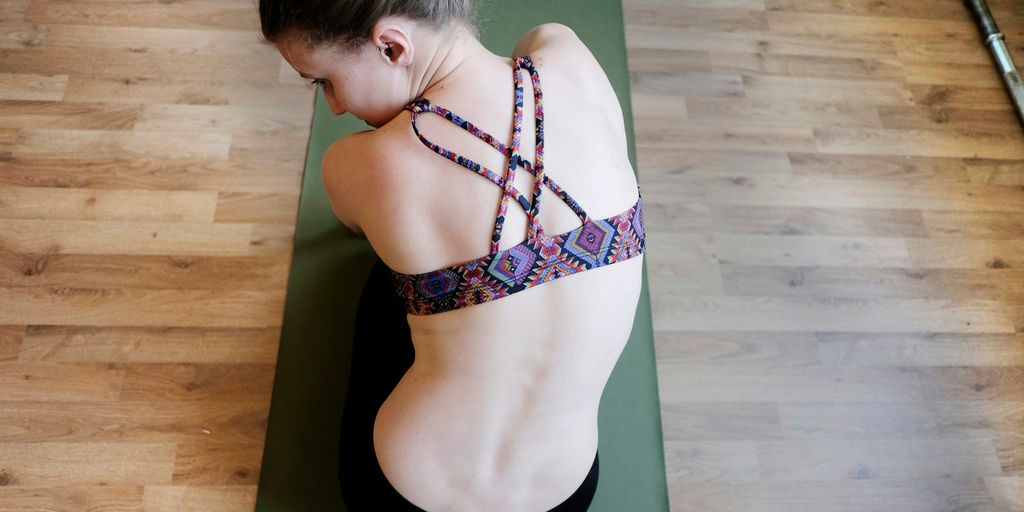
Finding the Perfect Yoga Mat: Your Ultimate Guide to Targeting Quality and Comfort
Choosing the right yoga mat can make a big difference in your practice. With so many options, it can be hard to know which one is best for you. This guide will help you find a yoga mat that fits your needs in terms of quality and comfort. From different types and key features to top brands and care tips, we’ve got you covered.
Key Takeaways
- Know the different types of yoga mats available, including their materials and benefits.
- Consider the key features like grip, portability, and durability when choosing a mat.
- Choose a mat that matches your yoga style and meets your body's needs.
- Look for top brands and find the best deals whether shopping online or in-store.
- Take care of your yoga mat with proper cleaning and storage to make it last longer.
Understanding Different Types of Yoga Mats
Material Options and Their Benefits
Yoga mats come in various materials, each offering unique benefits. PVC mats are durable and provide excellent grip, making them a popular choice for many practitioners. On the other hand, rubber mats are eco-friendly and offer good traction. TPE mats are lightweight and easy to clean, while cotton mats are breathable and provide a natural feel.
Thickness and Its Impact on Comfort
The thickness of a yoga mat can greatly affect your comfort during practice. Mats typically range from 1/16 inch to 1/4 inch thick. Thicker mats offer more cushioning, which is ideal for those with sensitive joints. However, thinner mats provide better stability and balance, making them suitable for more dynamic styles of yoga.
Eco-Friendly Choices
For those who prioritize sustainability, there are several eco-friendly yoga mat options available. Mats made from natural rubber, jute, or organic cotton are excellent choices. These materials are biodegradable and free from harmful chemicals, making them better for the environment and your health.
Choosing the right yoga mat involves considering various factors, including material, thickness, and eco-friendliness. By understanding these options, you can find a mat that meets your needs and enhances your practice.
Key Features to Look for in a Yoga Mat
Grip and Traction
A yoga mat with good grip and traction is essential to prevent slipping during poses. Look for mats with textured surfaces that provide a firm hold, even when you sweat. This is especially important for styles like hot yoga.
Portability and Weight
If you plan to carry your mat to classes or travel with it, consider its weight and portability. Lightweight mats are easier to transport but may offer less cushioning. Foldable mats can be a great option for those on the go.
Durability and Longevity
Investing in a durable yoga mat can save you money in the long run. Check for high-quality materials that resist wear and tear. Some mats come with warranties, which can be a good indicator of their longevity.
A durable mat not only lasts longer but also provides consistent performance, making your practice more enjoyable.
How to Choose the Right Yoga Mat for Your Practice
Choosing the perfect yoga mat is important for a great yoga experience. With many options available, it can be hard to decide which one is best for you.
Top Brands and Where to Find Them
When it comes to yoga mats, knowing the top brands and where to find them can make a big difference in your practice. Here are some of the best brands and tips on where to shop.
Popular Yoga Mat Brands
- Manduka: Known for their durability and eco-friendly materials, Manduka mats are a favorite among serious yogis.
- Liforme: These mats offer excellent grip and alignment guides, making them perfect for beginners and advanced practitioners alike.
- Gaiam: A great option for those looking for affordable yet high-quality mats, Gaiam offers a wide range of designs and thicknesses.
- Jade Yoga: Made from natural rubber, Jade Yoga mats provide great traction and are environmentally friendly.
- Lululemon: Known for their stylish designs and high performance, Lululemon mats are a bit pricier but worth the investment.
Shopping Online vs. In-Store
Shopping for a yoga mat can be done both online and in-store. Online shopping offers the convenience of browsing a wide selection and reading reviews from other customers. Websites like Amazon, YogaOutlet, and the official brand sites are great places to start. On the other hand, shopping in-store allows you to feel the mat's texture and thickness before buying. Stores like Target, Walmart, and specialized yoga shops often have a good selection.
Finding Deals and Discounts
Finding a good deal on a yoga mat can save you money. Look for sales during holidays or special events. Signing up for newsletters from your favorite brands can also give you access to exclusive discounts. Additionally, checking out clearance sections both online and in-store can lead to some great finds.
For those wondering where to find the perfect yoga mat at Target, you'll be pleased to know that Target offers a diverse selection of high-quality, affordable options for every yogi. They make it easy to shop both in-store and online, ensuring you find the right mat for your needs.
Caring for Your Yoga Mat
Cleaning and Maintenance Tips
Keeping your yoga mat clean is essential for both hygiene and longevity. Regular cleaning helps prevent the buildup of sweat and dirt. Use a soft cloth to wipe down your mat after each session. A spray bottle filled with a homemade solution can be handy for both regular wipe-downs and spot-cleaning.
Storing Your Mat Properly
Proper storage of your yoga mat can extend its life. Always roll your mat up loosely and store it in a cool, dry place. Avoid leaving it in direct sunlight or in the trunk of your car for long periods, as this can cause the material to break down faster.
When to Replace Your Yoga Mat
Even with the best care, yoga mats don't last forever. If you notice your mat losing its grip or showing signs of wear and tear, it might be time for a replacement. A good rule of thumb is to replace your mat every 6 to 12 months, depending on how often you use it.
Personalizing Your Yoga Mat Experience
Customizing Your Mat
Finding the perfect custom yoga mat for your practice can be a fun and rewarding experience. With a custom yoga mat, you can choose colors, patterns, and even add personal logos or text. This makes your mat unique and reflects your personal style.
Using Accessories for Enhanced Comfort
Accessories can make your yoga practice more comfortable and enjoyable. Consider using yoga blocks, straps, or a bolster to support your poses. These tools can help you achieve better alignment and make challenging poses more accessible.
Incorporating Your Mat into Your Lifestyle
Your yoga mat can be more than just a tool for practice. Incorporate it into your daily routine by using it for stretching, meditation, or even as a comfortable spot to sit while reading or watching TV. This way, your mat becomes a versatile part of your lifestyle.
Make your yoga sessions special with a mat that fits your style. At Yune Yoga, we offer a variety of mats, from eco-friendly options to fun designs. Ready to find your perfect mat? Visit our website and explore our collection today!
Conclusion
Finding the perfect yoga mat is all about knowing what you need and what feels right for you. It's important to think about the thickness, material, and texture of the mat. Don't forget to check if it's easy to clean and carry around. Remember, a good yoga mat can make your practice more enjoyable and help you stay comfortable. So, take your time, try out different options, and choose the one that makes you feel the best. Happy yoga!
Frequently Asked Questions
What material is best for a yoga mat?
The best material for a yoga mat depends on your needs. PVC mats are durable and provide good grip, while natural rubber mats are eco-friendly and offer excellent traction.
How thick should my yoga mat be?
The thickness of your yoga mat depends on your comfort needs. Thicker mats (around 6mm) provide more cushioning, which is great for joint support. Thinner mats (around 3mm) offer better stability for balance poses.
Are eco-friendly yoga mats worth it?
Eco-friendly yoga mats are a great choice if you want to reduce your environmental impact. They are usually made from natural materials like rubber or cork and are biodegradable.
How do I clean my yoga mat?
To clean your yoga mat, use a mixture of water and mild soap. Wipe it down with a cloth and let it air dry. Avoid using harsh chemicals as they can damage the mat.
How often should I replace my yoga mat?
You should replace your yoga mat when it starts to wear out or lose its grip. This usually happens after about a year of regular use, but it can vary depending on the quality of the mat.
Can I use a yoga mat for other exercises?
Yes, you can use a yoga mat for other exercises like Pilates, stretching, or even as a comfortable surface for bodyweight workouts. Just make sure it's clean and in good condition.


